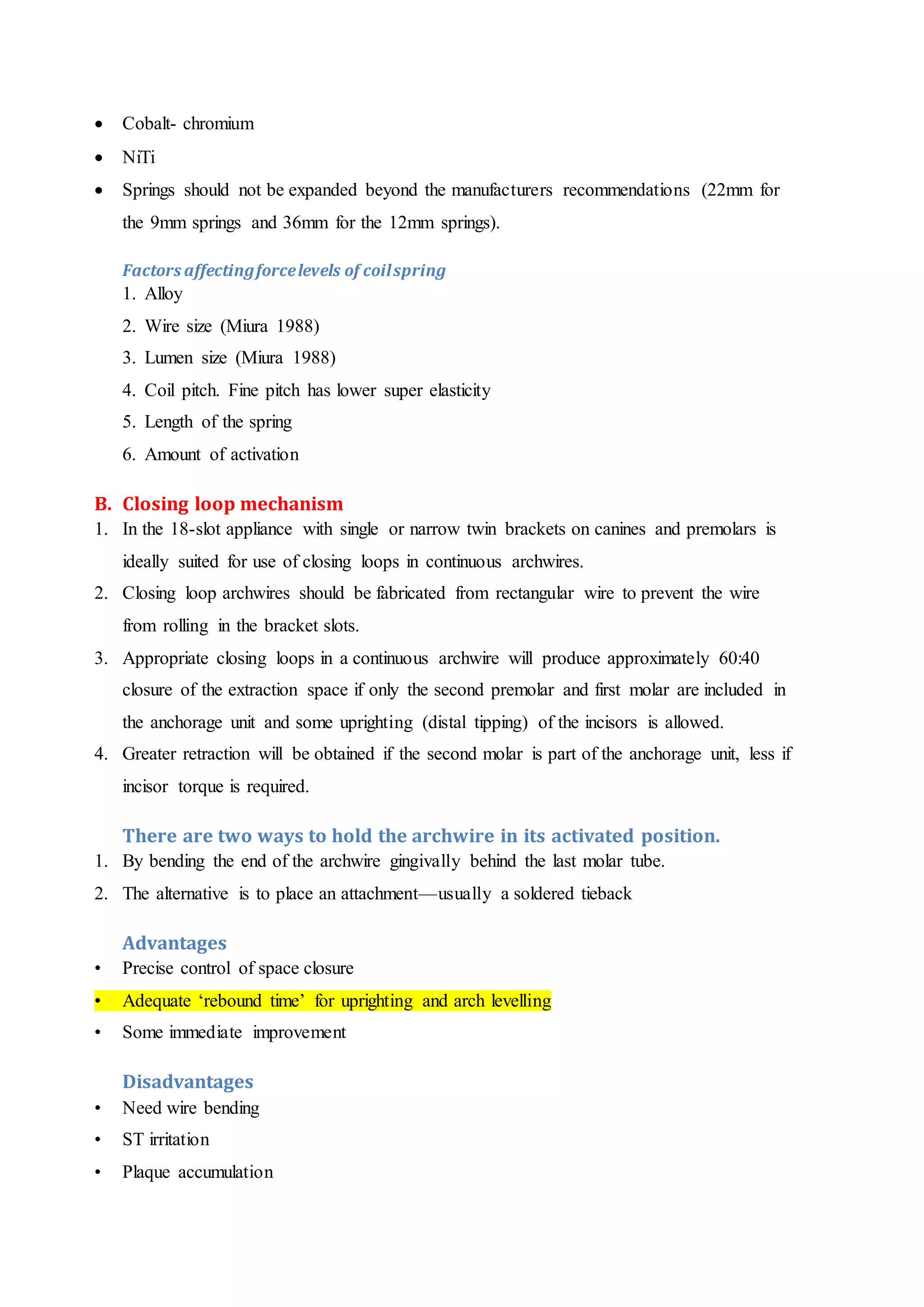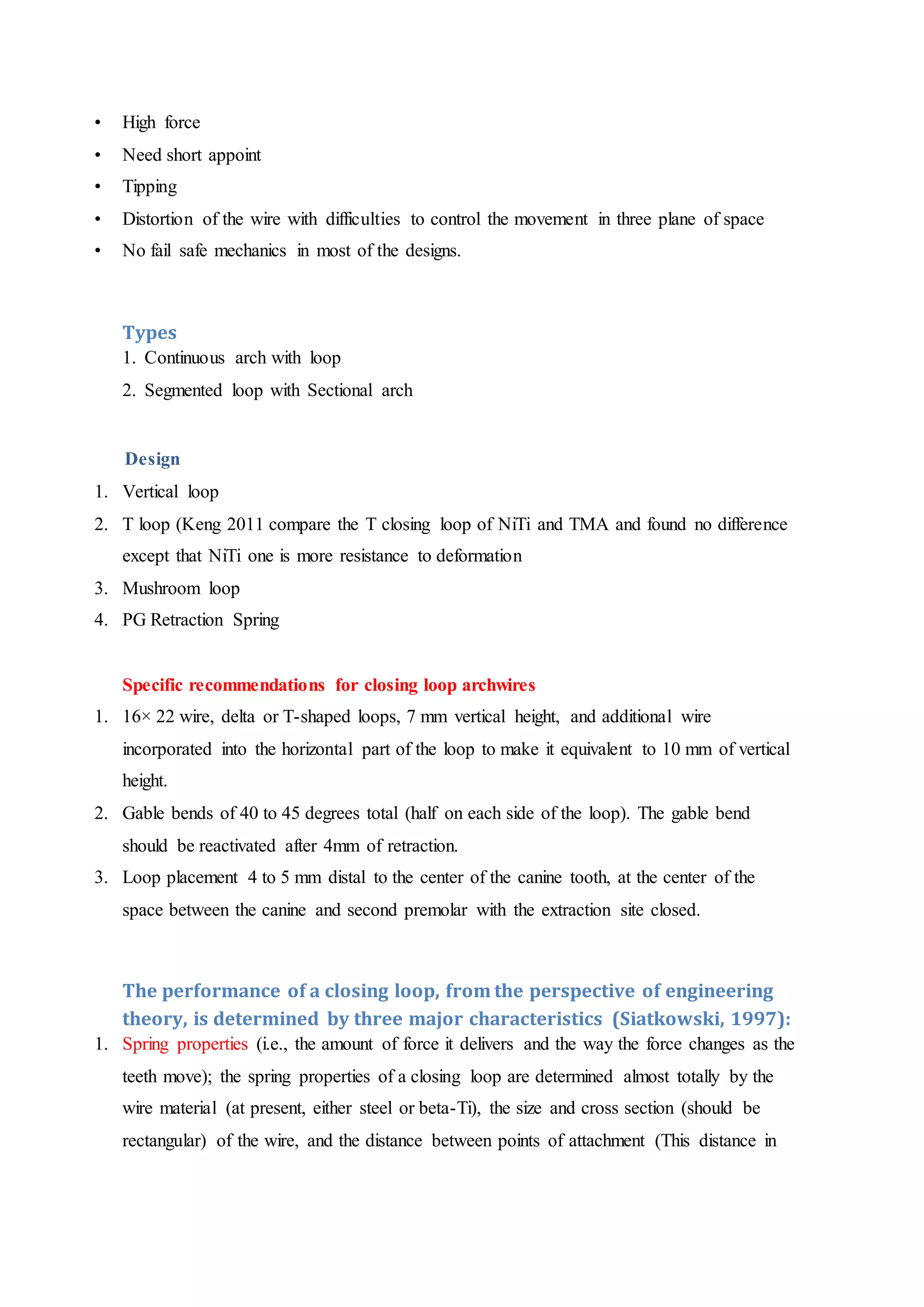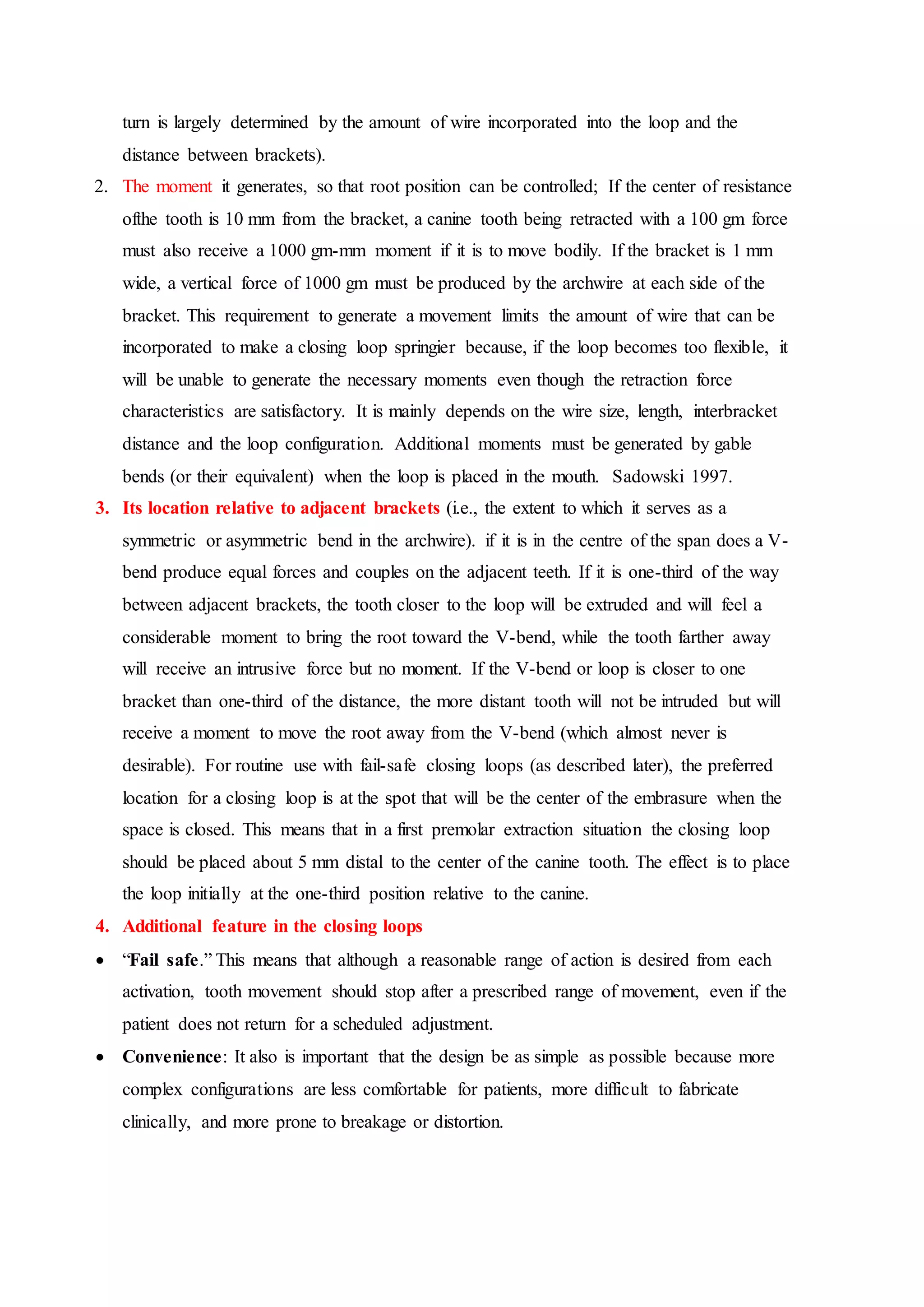The document discusses various space closure mechanics in orthodontic treatment. It describes sliding mechanics using elastic ties or nickel titanium springs to close extraction spaces, as well as loop mechanics using loops fabricated in archwires. The ideal force delivery system is economical, provides optimal controlled tooth movement with minimal operator manipulation or patient discomfort. Nickel titanium springs provide faster space closure than elastic ties and maintain force more consistently over time. Both continuous sliding mechanics and two-step retraction can effectively retract anterior teeth with similar levels of anchorage loss and root resorption.















